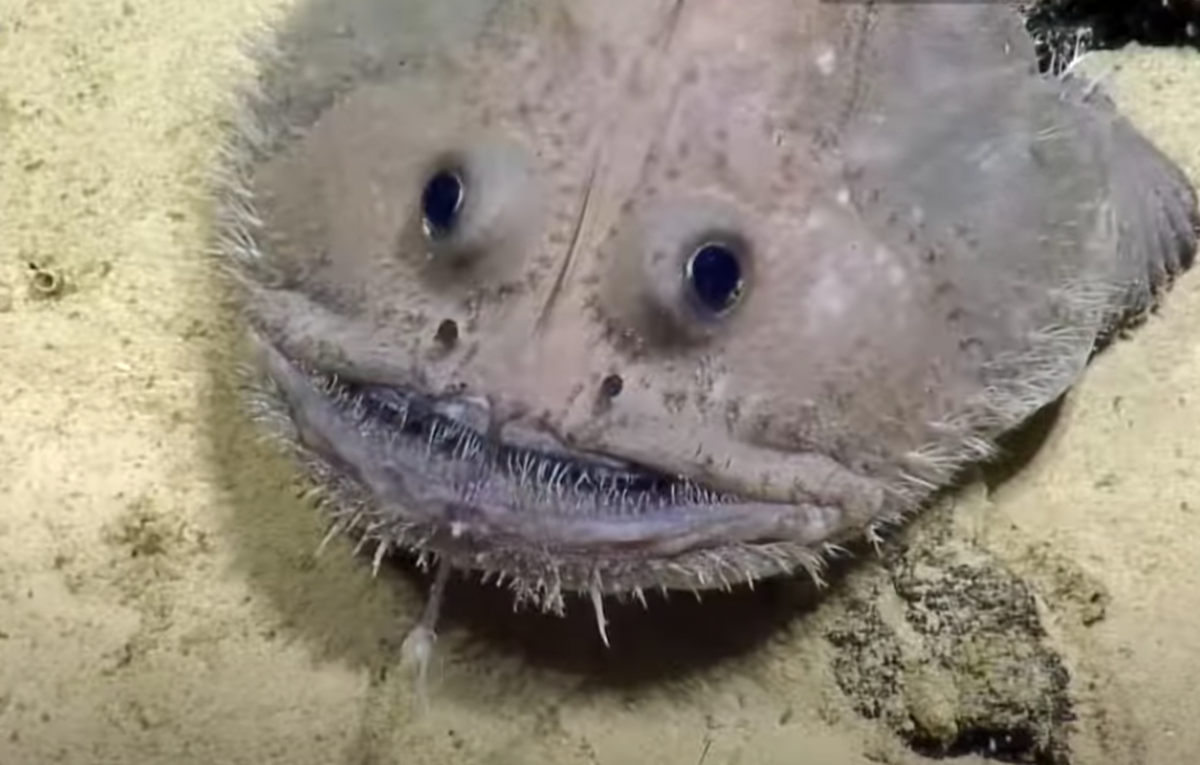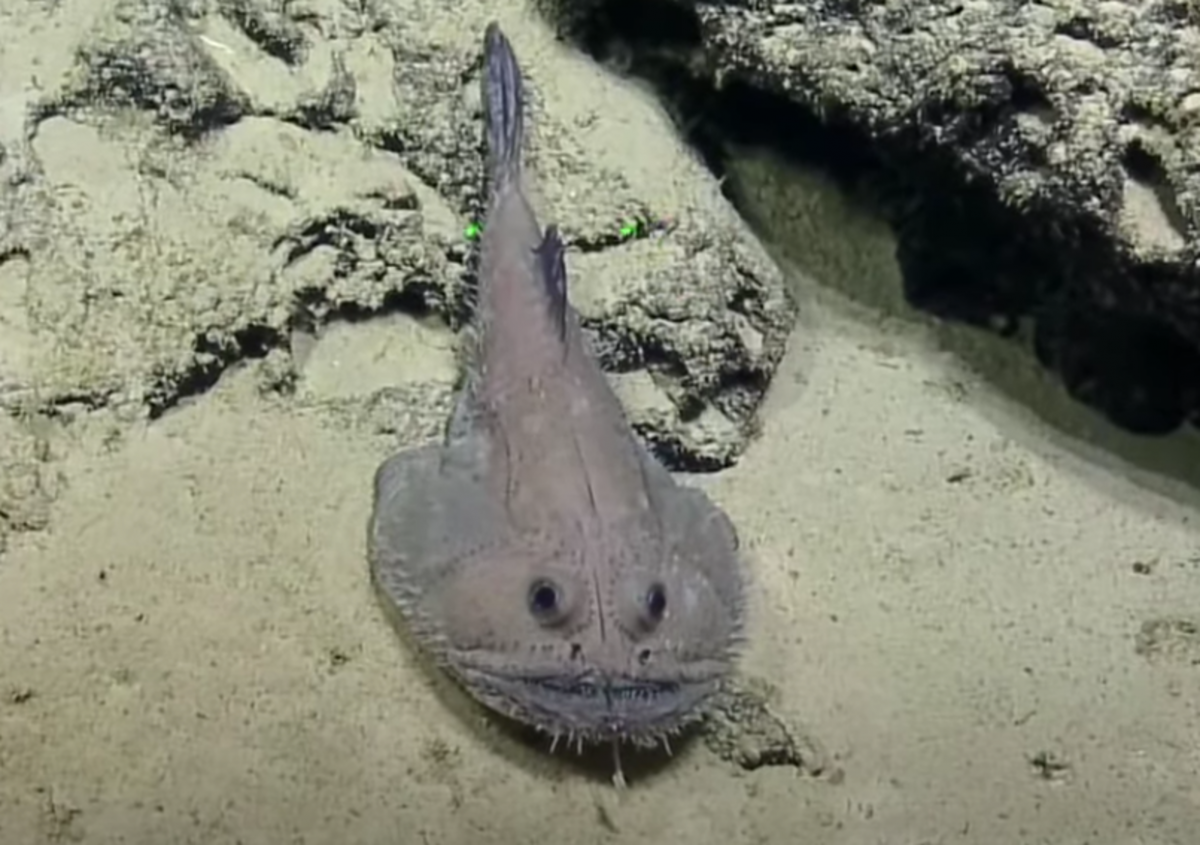A "toothy" anglerfish has been filmed on the bottom of the seafloor, about 3,000 feet from the surface.
The footage was taken at the Kingman Reef National Wildlife Refuge. This is a protected area just over 900 miles southwest of Hawai'i. It is considered one of the most pristine coral reef atoll ecosystems in the world.
Researchers with Nautilus Live were exploring the refuge as part of an expedition funded by National Oceanic and Atmospheric Administration (NOAA) Ocean Exploration, through the Ocean Exploration Cooperative Institute (OECI). This is a mission to map, characterize and explore the ocean territory of the U.S.
The footage from Nautilus Live shows explorers using a remote operated vehicle. The anglerfish was at first identified as a batfish by the researchers, but was later established to be a type of goosefish, Sladenia sp. These are types of anglerfish, belonging to the family Lophiidae.
In a YouTube video, the team said it the "toothy" anglerfish was grinning at the camera. "This anglerfish ... was first recorded on video over 1,000 meters deep and has hands down the coolest facial expression underwater," a statement from Nautilus Live said.

The goosefish was estimated to be around 15 inches long. An up-close shot of the fish shows its chin lure, which is a modified fin it uses to attract prey.
Goosefish are found in oceans across the world. They tend to live on sandy and muddy sea floors, normally at depths of over 3,000 feet. Like other anglerfish, they are characterized by their large heads, tooth-filled mouths and angling appendage.
These fish hunt by lying very still on the ocean floor, waiting for their prey to approach. When close enough, these speedy hunters will strike, using their huge mouths to gobble up other fish, invertebrates and for some species, even birds.
In 2013, the NOAA reported a species of goosefish that had started preying on dovekies, a small member of the puffin family. They recovered dovekies from the stomachs of 14 goosefish from the waters off the coast of Massachusetts. Researchers believe dovekies were being consumed by goosefish as they ascended to the surface to spawn, feeding on these birds as they dove down to hunt small fish and crustaceans.

Nautilus Live said over 225 fish have been recorded in the Kingman Reef National Wildlife Refuge since they started their exploration on March 14. These include sharks, rays and eels, along with smaller species like wrasses, parrotfish and butterflyfishes.
The team now plans to head to the Papahānaumokuākea Marine National Monument (PMNM) to explore the ancient seamounts of the Liliʻuokalani Ridge. The PMNM is a U.S. National Monument about 600 miles off the coast of Hawaii. It covers 583,000 square miles of ocean, making it one of the largest marine conservation areas in the world.
Uncommon Knowledge
Newsweek is committed to challenging conventional wisdom and finding connections in the search for common ground.
Newsweek is committed to challenging conventional wisdom and finding connections in the search for common ground.
About the writer
Hannah Osborne is Nesweek's Science Editor, based in London, UK. Hannah joined Newsweek in 2017 from IBTimes UK. She is ... Read more
To read how Newsweek uses AI as a newsroom tool, Click here.








